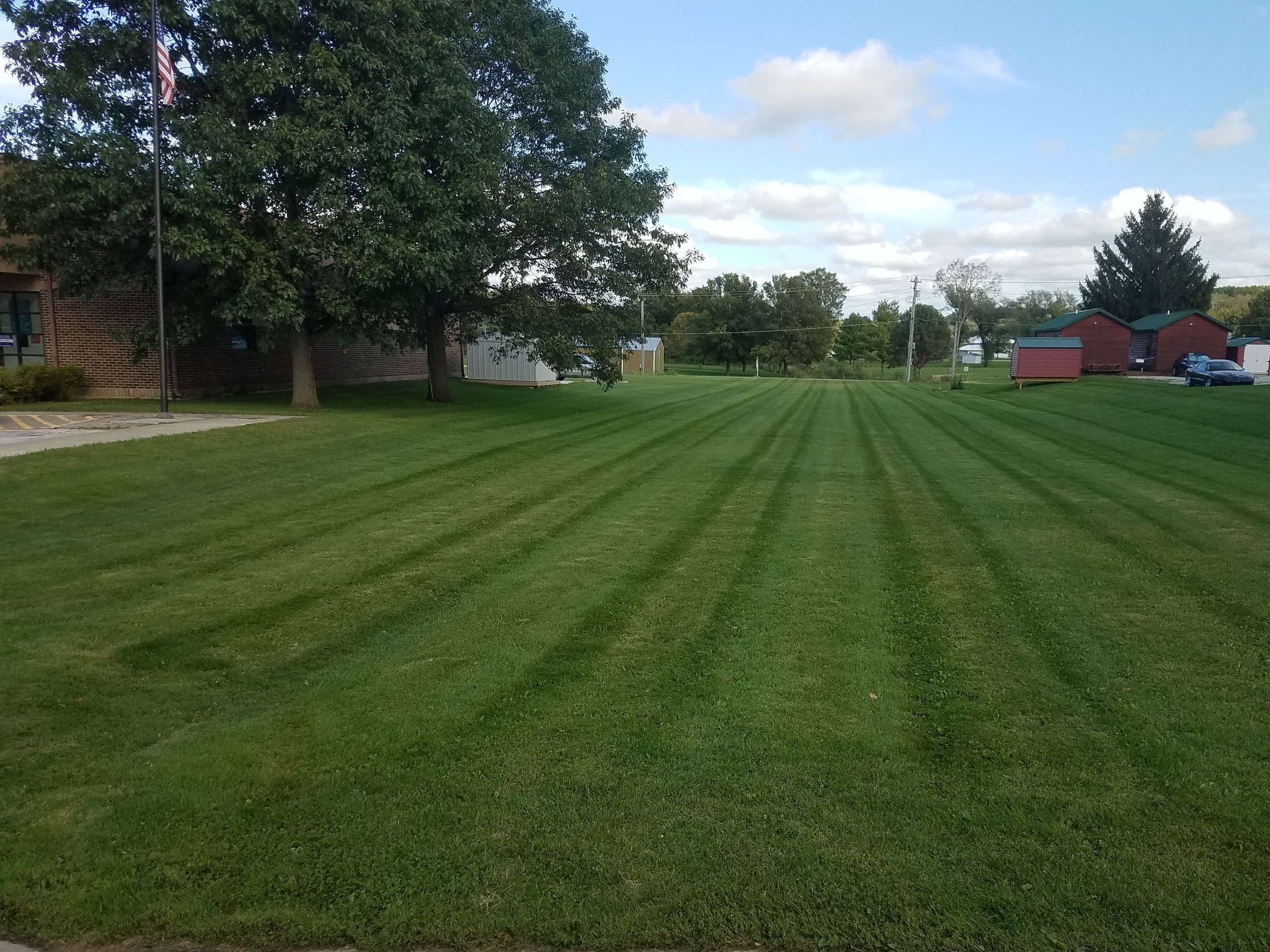Mowing & Maintenance
Mow at a height of 3in or higher in the midwest. Helps shade out weeds.
Mowing short increase chance of weed germination, causes additional stress, and increases fungi potential.
Leave the clippings on the lawn. Decomposing clippings increase soil quality.
Use sharp blades, dull blades cause tearing resulting in increased risk of disease.
Change mowing directions.
Avoid mowing in wet conditions.
Use the 1/3 rule, only cut up to 1/3 of grass leaf.
Spring & fall
Excessive debris on lawn can suffocate the grass and create an environment prone to diseases such as snow mold.
Maintain mowing height in the fall long grass over winter increases disease risk.
In spring remove rock, sand, and salt from along road sides.
Spring, remove thatch if excessive, hand rake, or dethatch. Orbital sweepers with metal/plastic bristles are hard on the grass and remove to much thatch and healthy grass.
Aerating your cool season turf lawn is crucial to promote proper air circulation, reduce soil compaction, and ensure optimal nutrient absorption.
If you notice any bare or thinning areas in your cool season turf lawn, fall is an excellent time to overseed.
Try to reduce the amount of foot traffic on your cool season turf lawn during the winter months. Frozen or partially frozen grass blades can easily be damaged under pressure, leading to bare spots and compaction.

